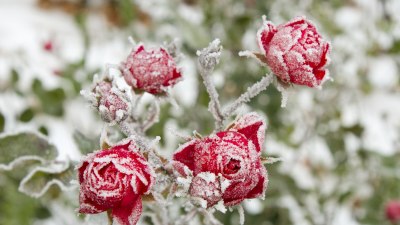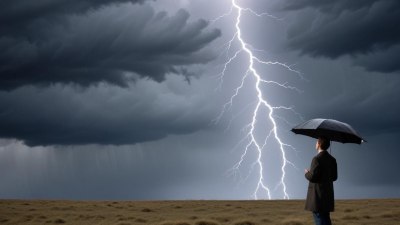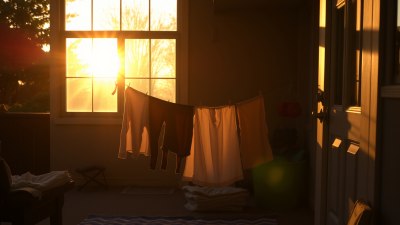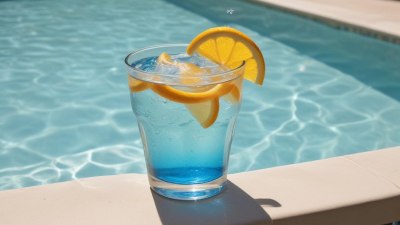How the Forecast Crashes Your Good Hair Day on Purpose
Explore how weather forecasts impact your hair day, revealing the science behind weather's effect on hair health and styling.

Every morning, millions check their weather forecast hoping to plan their day effectively. Whether it’s to dress appropriately or plan outdoor activities, the weather forecast holds significant influence over our daily decisions. Yet, for many, there is a particular dread associated with certain forecasts, especially when it comes to their hair. A sunny day promises a straightforward hairstyle, while humidity or rain threatens to undo hours of effort. But why does the weather seem to sabotage your good hair day on purpose? This article explores the scientific connections between weather conditions and hair health, the psychology behind hair frustrations related to weather, and practical advice to outsmart meteorological mood swings in your hair routine.
The Science Behind Hair and Weather
Hair is a complex biological structure primarily composed of keratin, a protein that is sensitive to environmental changes. The physical properties of hair respond dynamically to moisture, temperature, and air quality. Hair has a natural ability to absorb and release water, which affects its elasticity, texture, and volume. Different weather patterns introduce various elements that interfere with these properties, thus impacting how hair behaves on any given day.
Humidity is often hailed as the arch-nemesis of a flawless hairstyle. When the air contains high moisture content, hair strands absorb water molecules, causing the keratin fibers to swell. This swelling disrupts the alignment of the hair’s cuticle layer, leading to frizz and loss of smoothness. In contrast, dry air strips moisture from hair, making it brittle and susceptible to breakage. Temperature fluctuations can also alter the scalp’s oil production, creating either overly oily or excessively dry conditions that affect hair manageability.
How Weather Forecasts Influence Hair Care Decisions
Checking the weather forecast before styling hair has become a daily ritual for many people. The forecast not only informs the choice of outfit but also dictates which hair care products to use and which hairstyles can withstand the day’s conditions. For example, if there is a high chance of rain or humidity, individuals might opt for protective styles like buns or braids that reduce the exposure of hair to moisture. Similarly, forecasts indicating strong wind might encourage more secure updos or the application of anti-frizz serums.
However, this constant calculation and modification can lead to frustration, as many find that even the best-laid plans fall short when confronted with unexpected weather changes. This feeling can sometimes translate into a belief that the forecast “intentionally” ruins their hair day, an anthropomorphic way of expressing irritation with the uncontrollable forces of nature.
The Psychological Impact of Weather on Perception of Hair
Hair is deeply tied to identity and self-esteem, making hair disruptions feel particularly personal. Psychological studies show that external environmental factors like weather can influence mood and self-perception, intensifying negative feelings when hair doesn’t behave as expected. When the hair forecast is poor, individuals may feel less confident or more stressed, perpetuating a cycle where the bad hair day feels worse simply because of the weather prediction.
This psychological interplay is compounded by social media culture, where idealized hair images create unrealistic expectations. When reality doesn’t match these images due to weather challenges, dissatisfaction grows. Thus, the forecast, by alerting individuals to poor conditions, indirectly primes them for a negative hair experience, even before stepping outside.
Common Weather Conditions and Their Specific Impact on Hair
Humidity: High humidity causes hair to absorb excess moisture, leading to cuticle swelling and frizz. This is particularly problematic for curly and wavy hair types, which tend to dry out unevenly and become unmanageable.
Rain: Wet weather not only adds moisture but often causes hair to lose its style and volume. The weight of water can flatten curls and waves and destroy blowouts or straight styles.
Wind: Strong winds tangle hair and create static electricity, resulting in flyaways and knots. Wind exposure also increases the likelihood of mechanical damage when brushing or styling.
Cold Weather: Cold air lacks moisture, causing scalp dryness and brittle hair strands. Indoor heating exacerbates this by further reducing air humidity, increasing static and frizz.
Heat and Sunlight: Excess sun exposure can degrade hair proteins and strip natural oils, leading to dryness, color fading, and split ends.
Strategies to Mitigate Weather-Related Hair Challenges
While the weather forecast may forecast doom for your hairstyle, there are numerous ways to protect and preserve hair quality regardless of external conditions. The following strategies can help turn a potentially bad hair day into a manageable one.
Use Weather-Appropriate Hair Products: Smoothing serums and anti-frizz creams help shield hair cuticles from excess moisture in humid weather. Moisturizing shampoos and conditioners are essential for cold or dry environments to maintain hydration. UV protection sprays guard against sun-induced damage.
Adopt Protective Hairstyles: Styles that minimize hair exposure, such as braids, buns, or ponytails, help reduce tangling and frizz. They also lessen the impact of wind or rain while maintaining a polished appearance.
Regular Hair Care Routine: Consistent conditioning, deep conditioning treatments, and limiting heat styling help maintain hair integrity so that it withstands environmental stress better.
Use Accessories Wisely: Hats, scarves, and umbrellas not only protect hair but also prevent scalp exposure to harsh weather. Silk or satin linings reduce friction when covering hair.
Innovations in Forecasting and Hair Care Products
The intersection of technology and hair care is evolving. Emerging innovations include weather-adaptive hair products that change properties based on environmental conditions. For example, some shampoos and conditioners now contain humidity sensors embedded in their packaging to advise optimal application times.
Additionally, mobile apps offer hyper-localized weather data combined with personalized hair care recommendations. These tools empower users to prepare better for weather-induced hair problems. Predictive analytics also help hair professionals plan treatments and recommend products that align with upcoming weather patterns.
Case Studies: Real-Life Impacts of Forecasts on Hair Days
Consider a professional with a critical client presentation. A rainy forecast leads her to spend extra time securing her straightened hair with anti-frizz products and protective styles. Despite these efforts, sudden showers leave her hair damp and disheveled, affecting her confidence. This experience is common and underscores the unpredictable nature of weather impacts.
Another example is a student attending an outdoor festival during a hot summer day. The forecast predicts high UV levels, prompting him to use sun protection spray for his dyed hair. While he maintains vibrant color and manages heat damage, the humidity causes slight frizz, reminding him how variable factors combine to challenge hair health.
Understanding the Limits: Why Weather Forecasts Can’t Guarantee Perfect Hair
Weather forecasts provide probability-based information about atmospheric conditions. While they are increasingly accurate, microclimates and sudden changes create unpredictability. Moreover, individual hair types react differently to the same conditions, adding complexity to managing hair based on forecasts alone.
Importantly, weather is only one of many factors influencing hair health, including diet, genetics, stress levels, and hair care practices. Thus, even a perfect weather day might not guarantee a perfect hair day, reminding us that hair challenges are multifaceted.
Embracing Hair Imperfections in the Face of Weather
Ultimately, learning to accept and adapt to hair’s natural variability fosters resilience. Embracing modes like waves, curls, or volume caused by weather can shift the narrative from frustration to creative expression. Hair’s interaction with weather can become an opportunity to experiment with new styles, textures, and looks, turning an anticipated bad hair day into a unique personal statement.











